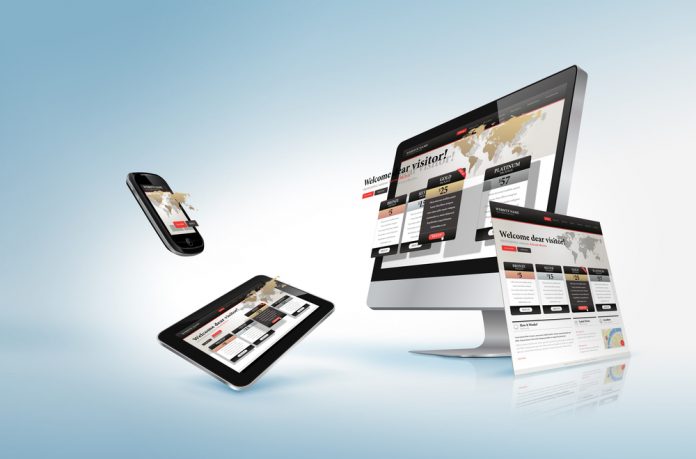Something momentous happened in October 2016: it was discovered that more websites are now being loaded on smartphones and tablets than on desktop computers for the first time ever. Statcounter found that 51.3 per cent of pages popped up on smartphones or tablets that month, up from less than five per cent in 2010 and demonstrating an astonishing rate of growth. The company’s chief executive called the development “a wake-up call” for businesses to ensure that their sites are mobile-friendly.
Indeed, usability is a big issue for many websites and some hotels are among those companies that are guilty of not catering adequately for this on-the-go audience. Studies regularly report rates of abandonment when pages take too long to load – and they are always surprisingly high. If mobile wasn’t such a growth market it might not be a problem, but traffic is only going to grow in the future. You’ve simply got to ensure your hotel website design is mobile-friendly and that it is achieving conversions from people using phones and tablets. But how can you grow your bookings through these channels? We’ll provide some advice below that might help you to avoid committing the most common mobile errors.
1.Keep your pricing clear Travellers aren’t going to like surprises when it comes to how much they’re going to be paying for their accommodation, even if they have a high-end budget. That’s why it’s essential to be as transparent as possible and preferably to display the whole price for the booking (for instance, the total for two people or a family, rather than the price per person) as soon as you can.It might put a few users off at the start, but they are likely to be the same ones who would have abandoned their carts later anyway – the others will likely appreciate being kept better informed. A 2016 study by Sales Cycle revealed that 53 per cent of travel bookings are abandoned if the total price is only displayed at the end of the reservation process, so being upfront should help you to ensure more guests go through to the very end.
2.Make pages load faster It’s intensely annoying to click on a mobile website, only to find that it won’t come up or takes absolutely ages. And you might be surprised about just how much it can impact upon your conversions. According to Kissmetrics, 47 per cent of consumers expect a page to load in two seconds or less – and 40 per cent would abandon a site that takes more than three seconds to load.Just a one-second delay can result in a whopping seven per cent reduction in conversions, which could equate to a lot of money being frittered away. To prevent this, you need to ensure that your hotel’s pages come up as rapidly as possible. Go through everything with a fine toothcomb and when it comes to your mobile site, take out everything you don’t really need and leave just the bare bones.You’ll need photos, but compress them all and beware any that take up enormous amounts of memory, as they are likely to slow things down. Also, take out things that use Flash Player (it’s incompatible with Apple devices anyway) and remove videos that play by themselves.This should maximise speeds and stop you losing valuable potential guests just because you’re wearing their patience thin.
3.Keep the booking process simple It’s good advice to keep your booking forms as short and sweet as possible in general, but it’s absolutely essential when it comes to mobile users. People on their phones or tablets might be on the bus and so find it difficult to type information into tiny little boxes, plus they may have large fingers that don’t work well with fiddliness even if they aren’t on the move.When you’re composing your mobile booking form, eliminate any fields that aren’t absolutely necessary, such as address and postcode and landline phone number. If you find you need these details later, you can collect them once the booking has been completed, but annoying travellers with them at this stage is likely to make them ditch you.
4.Make payment easy and safe Putting your credit card details in a box online is quite a daunting thing to do, especially when it’s a company you haven’t done business with before, so hotel guests need to be reassured that they’re using a trusted site that will keep their data safe.Can you simplify the process by using Android Pay or Apple Pay, or that old failsafe Paypal? What about taking away this stage entirely and doing away with a deposit for booking? This might help your guests out by increasing their options, although you may get more cancellations if you go for the latter.Again, eliminating fields and reducing the number of clicks guests need ot make cna only help conversions.
5.Keep testing and perfecting You will always get people leaving your web pages, no matter how hard you try, but it might help to learn more about exactly where in the research and booking process you’re losing them. If it’s at the very first stage after they’ve looked at a few photos, they could be daydreamers simply browsing hotels for fun.
However, if they’re leaving you at other stages, examining the pages carefully may help you discover pain points that are influencing this decision, such as pricing or booking engine usability.With mobile growth increasing the way it has over the past seven years, who knows where we will be in 2020? It’s up to you to fix your hotel website’s usability issues and ensure more conversions – and hopefully more bookings through mobile channels.







